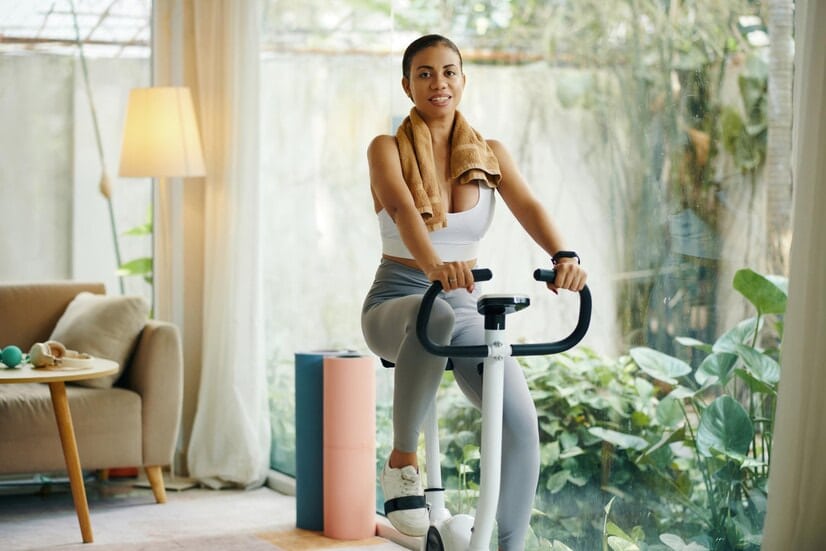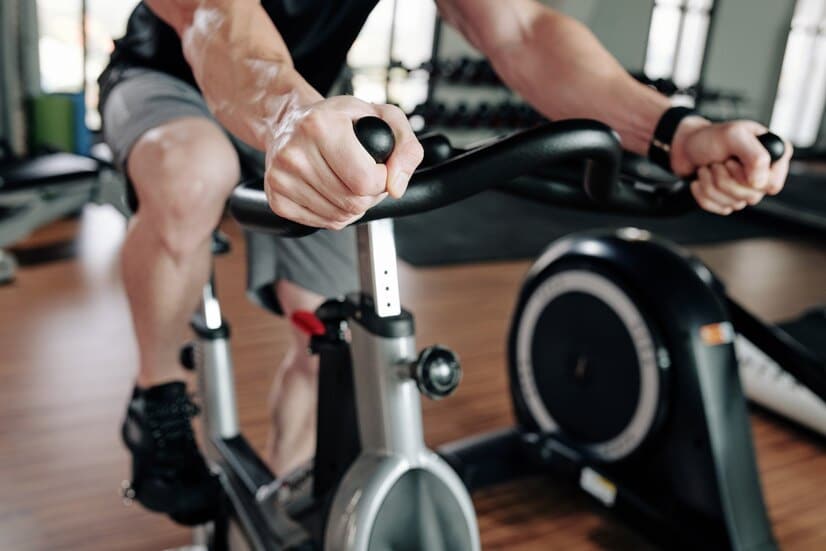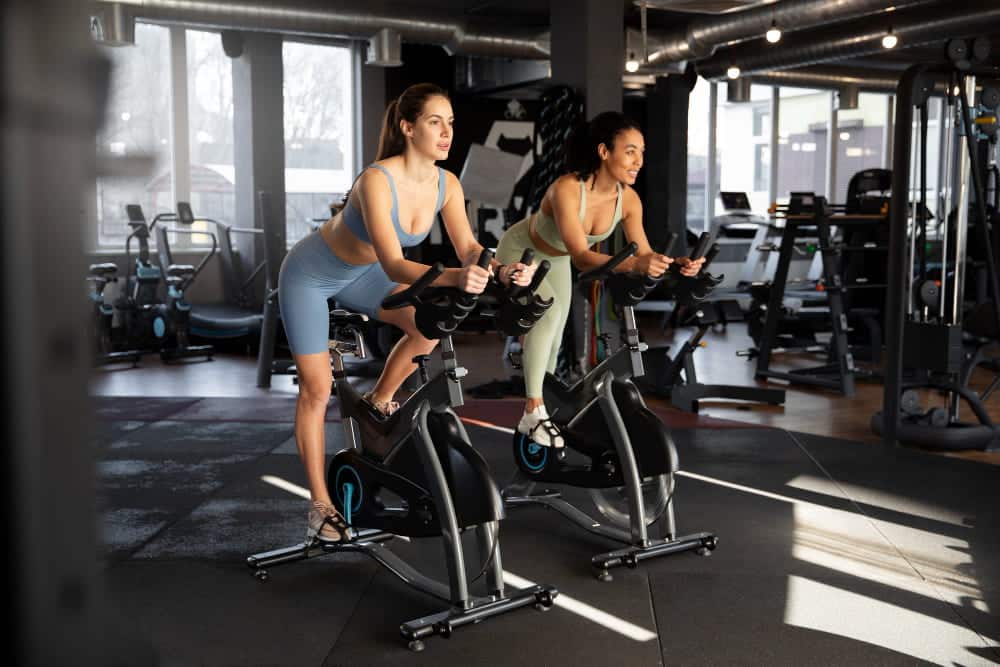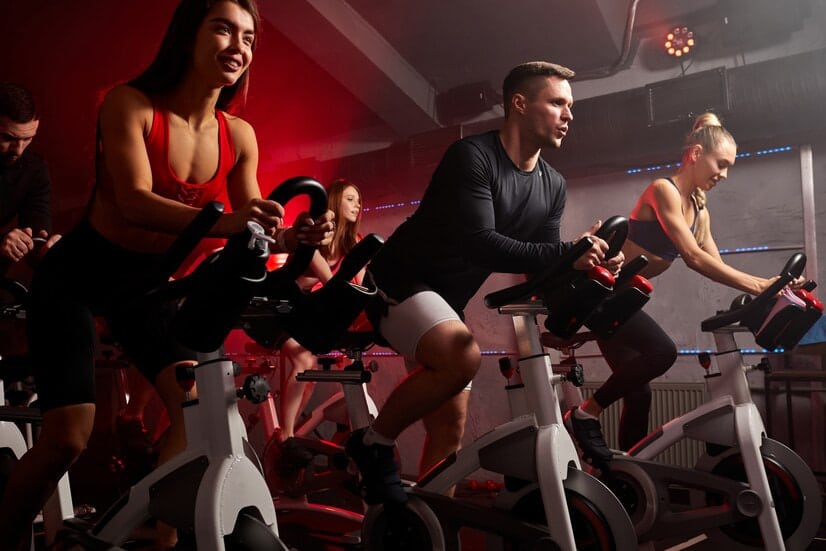
Summary
Welcome » Welcome » Tips for improving » Recuperation active velo d'appartement: how to make a success of your session?
Recuperation active velo d'appartement: how to make a success of your session?
Looking to optimise your recovery after intense training? Active recovery on an exercise bike is the ideal solution for promoting muscle regeneration while staying active. This article explains how to incorporate this method into your sports routine.
Summary
Understanding active recovery
Discover simple tips for adjusting your bike, choosing the right resistance and performing the right exercises. In just a few steps, you'll be able to recover effectively without compromising your performance.
What is active recovery?
There active recovery is a method of physical recovery which involves maintaining a light effort after intense training. Unlike passive recovery, which involves complete rest, active recovery promotes a gradual return to a state of rest while stimulating blood circulation and helping to eliminate accumulated toxins, such as lactic acid, more quickly.
The basic principles are simple: after a demanding session, you continue to move at a moderate pace. This approach allows you to recover without stopping the activity altogether, helping to reduce muscle fatigue more quickly.
While the passive recovery is based on stopping activity altogether, active recovery focuses on light movement. This may involve low-intensity pedalling, slow walking or gentle stretching. The idea is to keep moving to activate the cardiovascular system without straining. Active recovery is often more beneficial because it allows a smooth transition for the muscles and promotes better long-term recovery.
For cyclists, active recovery is a precious ally. It helps to reduce muscle sorenessThis improves muscle flexibility and prevents stiffness after a long or intense ride. By continuing to cycle at low intensity, you facilitate oxygenation of the muscles, which helps you recover better between training sessions and improves your endurance over the long term.
Preparing for active recovery
Optimum exercise bike settings
Good active recovery starts with optimum settings of your exercise bike. Whether you're a beginner or an experienced cyclist, it's essential to fit your equipment correctly to avoid injury and maximise the benefits of your training.
Start by setting the saddle. Make sure your legs are slightly bent when your feet are at the bottom of the crankset. If the saddle is too low, it can put unnecessary strain on your knees; if it's too high, you risk straining your hips and back. Next, adjust the handlebars so that your elbows are slightly bent and you are not leaning too far forward. This helps to maintain good posture, which reduces strain on the back and shoulders. These adjustments are simple but crucial for a comfortable and effective recovery session.
During active recovery, the aim is not to push yourself to extremes, but to maintain a good level of fitness. low resistance to promote blood circulation. By adjusting the resistance to a light level, you avoid fatiguing your muscles while continuing to use them sufficiently to speed up recovery. Too much resistance will cause unnecessary strain, while too little resistance will prevent you from reaping the full benefits of active recovery.
Recommended equipment
The success of your active recovery also depends on a adapted equipment. Although the exercise bike is the main component, the choice of accessories can improve your comfort and performance.
Opt for a breathable, comfortable clothing. Cycling shorts or leggings, combined with an anti-perspirant jersey, will keep you dry and prevent chafing. A pair of cycling shoes with a rigid sole is also a good choice for improving your pedalling efficiency and avoiding foot pain.
To stay hydrated throughout your session, always carry a water bottle. water bottle at your fingertips. A towel is also essential for wiping away sweat and preventing it from impeding your movements. A floor mat under your bike is recommended to protect your space from perspiration and stabilise your equipment.

Active recovery protocol on the exercise bike
Warm-up (5-10 minutes)
Before starting an active recovery session, a proper warm-up is essential to prepare your muscles and joints. This process gradually increases blood flow and prevents injury.
Joint mobility exercises
Start with a few joint mobility exercises. Make circles with your arms and ankles to wake up your joints. This helps to loosen up the key areas that will be used, in particular the knees, hips and shoulders. These simple movements help you to pedal smoothly.
Light pedalling
Then get on your bike and ride for a while. light pedalling with low resistance. The aim is to gradually increase your heart rate while allowing your body to adapt smoothly to the effort. Pedal at a moderate pace for 5 to 10 minutes, breathing deeply to oxygenate your muscles and prepare you mentally for the main phase.
Main active recovery phase (20-30 minutes)
The main phase is the very essence of the active recovery. The aim is to maintain a moderate effort over a period of 20 to 30 minutes, varying the pace slightly to activate the blood circulation without causing excessive fatigue.
Exercise 1: Pedalling at a moderate pace
Pedal at a steady pace for 5 to 7 minutesmaintaining an intensity of 50 to 60 % of your maximum heart rate (MHR). The emphasis is on fluidity of movement Keep the pedals moving steadily, without jerking, and breathe regularly. This first exercise helps you recover while gently boosting your cardiovascular system.
Exercise 2: Alternating cadences
To further stimulate blood circulationAlternate between fast and slow phases. For 8 to 10 minutespedal at a fast pace (80-90 rpm) for 1 minute, then slow down to 60-70 rpm for 1 minute. This alternation activates venous return and optimises muscle recovery.
Exercise 3: Dancer work
For 3 to 5 minutesstand up slightly from the seat in the dancerThis posture relieves pressure on the lower back and activates other muscle groups. This posture relieves pressure on the lower back and activates other muscle groups. The exercise remains light, but it helps to vary the effort and avoids the numbness caused by prolonged sitting.
Exercise 4: Single-leg pedalling
To work on themuscular balancePedal with one leg at a time. Alternate between the right leg and the left leg every 10 minutes. 30 secondsfor a total of 2 to 3 minutes per leg. This exercise corrects muscular imbalances and strengthens each side equally.
Calming down (5-10 minutes)
End your active recovery session with a return to calm progressive. Reduce the resistance and intensity of your pedalling on the Last 5 to 10 minutesto get your heart rate down. You should also do some deep breath to release tension and soothe the body after exercise.
Optimising post-session recovery
Once you have completed your active recovery session, it is essential to take steps to optimise recovery. This allows your body to regenerate effectively and take full advantage of the benefits of the sun's rays. benefits of training. The two key elements not to be overlooked are stretching and thehydration.
Targeted stretching
THE stretching are a crucial step in relaxing the muscles involved and helping them to return to a state of rest. They also help to prevent post-training muscle stiffness and pain.
Concentrate on the muscle groups you use most during your cycling session: the quadriceps, THE hamstrings and the calves. Stretch each muscle gently for 20 to 30 seconds, without straining. A well-executed stretch should produce a sensation of relaxation, without pain. These stretches help to release the tension built up in your legs and promote better blood circulation.
Mix the static stretchingwhere you maintain a fixed position, with dynamic stretchingThese involve controlled movements such as leg swings or gentle lunges. Static stretching promotes muscle relaxation, while dynamic stretching improves flexibility and prepares your muscles for future sessions. This combination ensures a complete and balanced recovery.
Hydration and nutrition
After an active recovery session, it is crucial that you rehydrate and eat properly. This helps to restore energy reserves, regulate body temperature and speed up muscle recovery.
During exercise, even moderate exercise, your body loses a considerable amount of water through perspiration. It is therefore essential to compensate for this loss by drinking enough water after training. A adequate rehydration helps to eliminate toxins, reduce muscle cramps and restore electrolyte balance. You can also opt for an electrolyte-rich drink to replenish lost minerals.
Your body needs nutrients to rebuild muscle fibres and restore glycogen reserves. An ideal snack after active recovery should combine proteins to help repair muscles and carbohydrates to replenish your energy. For example, a protein smoothie, a handful of almonds or yoghurt with fruit can be excellent choices. Don't underestimate the importance of this stage: feeding your body well will help you recover more quickly and effectively.
Incorporating active recovery into your routine
To maximise the benefits of active recovery, it's essential to make it a regular part of your sporting routine. Not only can it improve your performance, it can also help prevent injury and reduce muscle fatigue. Here's how to incorporate it effectively into your schedule.
Recommended frequency
There active recovery should be practised regularly to get the most out of it. Ideally, you should do an active recovery session. 1 to 2 times a weekThis will depend on your level of training and the intensity of your other sessions. If you're a beginner cyclist, start with a weekly session, then gradually increase as you gain endurance and strength. Experienced cyclists may want to consider incorporating it into their training. after each intense workoutespecially if they experience persistent muscle fatigue.
Appropriate times for active recovery
The best times to practise active recovery are after an intense session (such as a long bike ride or a HIIT session) or during the active rest days. Instead of remaining completely inactive, choosing a light activity such as exercise cycling can speed up muscle recovery while maintaining physical activity. This can also be beneficial on after a tough training sessionWhen you feel aches and pains. A 30-minute low-intensity session can do wonders to reduce tension.
Adaptation according to level and objectives
Whether you are a beginner or an experienced cyclist, active recovery must be adapted to your needs. personal objectives and your level of fitness.
If you're just starting out, it's important to start with a progressive programme. Your body needs to get used to this type of light effort. Opt for short sessions (20 minutes) and favour low-resistance pedalling. The idea is to build in active recovery without overloading your body. Over time, you can gradually increase the duration and intensity of your sessions.
More experienced cyclists can join intensity variations in their active recovery sessions. By alternating between phases of pedalling at different cadences or playing with the resistance of the bike, you can not only recover but also strengthen certain muscle groups. This approach is particularly beneficial if you're following an intense training programme, as it optimises muscle regeneration while maintaining a certain level of effort.
Monitoring and progress
There active recovery should not be a static process. To make the most of it and improve your performance over the long term, it's important to monitor your progress and adjust your programme according to your needs. Here's how to monitor your progress and when to change your routine.
Measurement tools
Monitoring your active recovery sessions is essential to understanding the impact on your body and optimising your training. Several measuring tools can help you stay on track.
A heart rate monitor is one of the simplest and most effective tools for monitoring your effort during active recovery sessions. By maintaining your cardiac frequency at between 50 % and 60 % of your MHR, you are ensuring that you remain in a moderate effort zone, ideal for recovery. If you notice that your heart rate is too high, it's possible that you're exercising at too high an intensity, which can delay recovery.
THE training tracking applications are also excellent tools for tracking your progress. Many apps are compatible with exercise bikes and allow you to view real-time information such as distance covered, speed, calories burned and, of course, your heart rate. This data allows you to monitor your performance and adjust your programme according to the results obtained. Popular applications include Strava, Zwift, or TrainerRoadwhich include specific functions for monitoring active recovery sessions.
Adjusting the programme
One of the major advantages of active recovery is that it can be adapted to your progress and your goals. As you progress, it is essential to re-evaluate your programme and adjust it to continue to reap the benefits.
Your progress can be measured by various indicators, such as the less aches and painsIf you notice that your muscles recover more quickly or that you feel less tired after an active recovery session, it means that your programme is working. If you notice that your muscles recover more quickly or that you feel less tired after an active recovery session, it means that your programme is working.
It may be necessary to change your routine when you notice that your progress is slowing down or if you start to feel too comfortable with your current programme. If your sessions seem too easy or you're no longer feeling the benefits of active recovery, consider increasing the resistance or duration of your sessions slightly. However, do this gradually to avoid overloading your muscles.

Conclusion
Active recovery on the exercise bike is a simple and effective way of improving your endurance and speeding up muscle recovery. By incorporating regular sessions adapted to your level, you can maximise the benefits while avoiding injury. Careful monitoring and regular adjustments will guarantee your progress.
For optimum recovery, don't forget to stretch and hydrate after each session. Use measurement tools to monitor your progress and adapt your programme accordingly.
Go indoor cycling with Space
Want to combine cycling and strength training? At SPACE CYCLE, our POWER RIDE session offers you a complete workout, combining cardio and strength training, with a focus on the core.
Enjoy a unique immersive experience, where the lighting effects and energising atmosphere, punctuated by our coaches and their exclusive playlists, will transport you.
Join us in our Bonne Nouvelle or Bastille studios for unforgettable indoor cycling sessions!
Read also
Biking perte de poids : comment atteindre vos objectifs efficacement ?
RPM how many times a week: Guide to optimising your sessions
Follow us
on instagram
To follow all our news,
take advantage of our tutorials and participate
in our many contests.
Breaking news!
Receive our newsletter.




